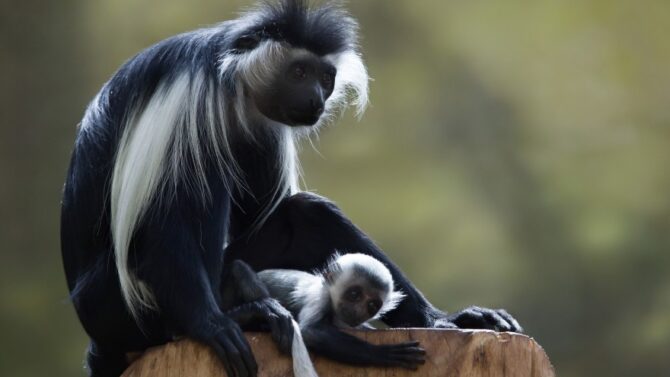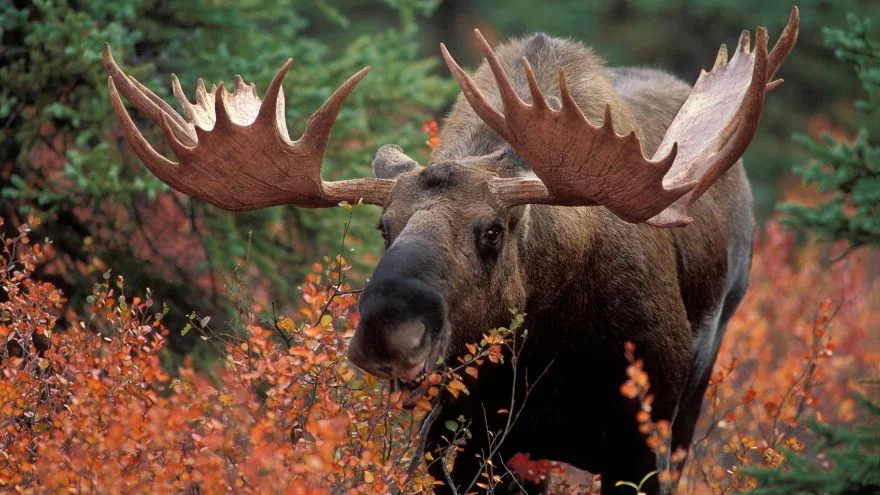If you’re planning a trip to the Dominican Republic, it’s essential to be aware of the potential dangers posed by the country’s wildlife.
With about 9,500 species of animals, the Dominican Republic is home to several of the most dangerous animals in the world.
From sharks to spiders and scorpions, these creatures can be deadly when provoked, making it crucial to exercise caution while sightseeing.
To help keep you safe, we’ve compiled a guide to the top 15 most dangerous animals in Dominican Republic.
Don’t let the risks put you off visiting this beautiful Caribbean country, but remember that safety should always be a top priority.
What are the Most Dangerous Animals in Dominican Republic?
15. Mata Cacata
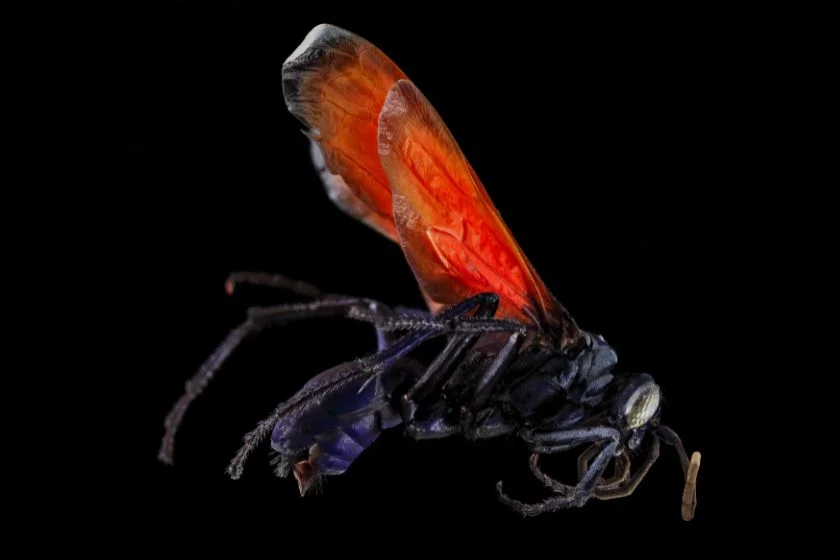
- Scientific Name: Pepsis Rubra
- Habitat: Loose Rock, rocks, rotted woods
- Threats: Venomous spider, aggressive and capable of inflicting a painful bite
On the surface, the mata cacata, a species of spider wasp, may look alluring, thanks to its shiny metallic sheen.
But beneath that attractive look that nature gifts, it is a villain. This wasp preys on scary and large tarantulas, feeding their larvae.
The mata cacata is known for its excruciating sting and paralyzing tarantula spiders.
The pain from the sting of the mata cacata has been compared to that of the bullet ant. While their sting may not result in such damage to humans, the pain can be extreme.
This insect is one of the species of spider wasps that can deliver stings with excruciating pain; the best rule of thumb is to lay hands off all wasps.
14. Lionfish
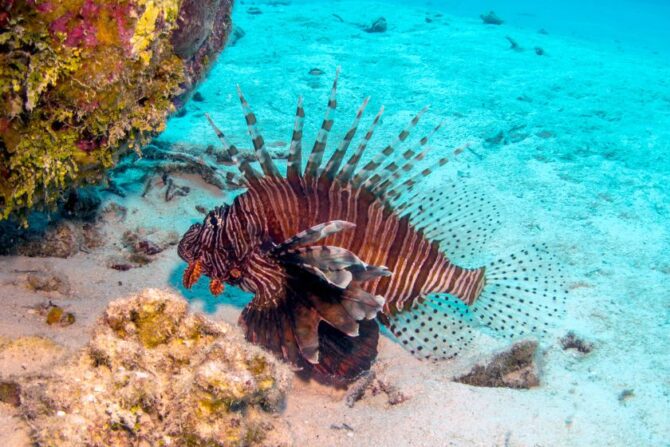
- Scientific Name: Scorpaena volitans
- Habitat: Warm marine water in the tropics
- Threats: Venomous spines, invasive species
Despite not being aggressive, the lionfish has a reputation for being a pest, and many don’t take kindly to these marine creatures.
This is mainly because the lionfish is an invasive species that can reproduce at an alarming rate and take the scarce resource of aquatic life from native species.
Lionfish do not act aggressively to humans except when they feel threatened.
When threatened, the lionfish deploys one of its most lethal defense mechanisms; the venoms in its stings.
The venom in the lionfish’s sting can cause severe health issues aside from the pain from the sting. Lionfish stings are known to cause heart failure, paralysis, and fever.
However, the lionfish is a tasty marine cuisine to enjoy, and you need not be bothered about consuming this species. In fact, reducing the lionfish population would help other marine life prosper.
13. Southern Stingray
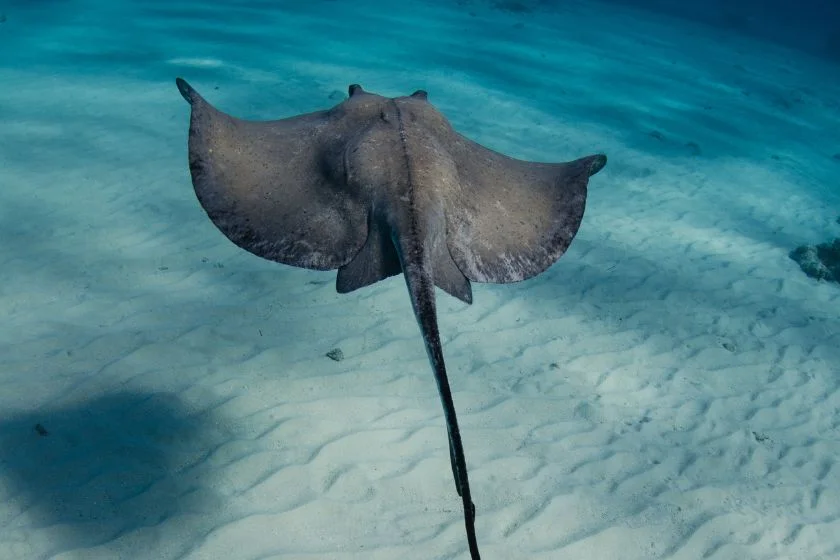
- Scientific Name: Hypanus americanus
- Habitat: Tropical and subtropical waters of the Atlantic Ocean, Caribbeans, Gulf of Mexico
- Threats: Venomous spines on their tails, can cause serious injury or death to humans
If you plan on exploring the shadowy depths of the Dominican Republic coastline, you must take caution because of the stingray.
Of course, you will never intentionally go close to a marine creature as odd-looking as the stingray, but the beast doesn’t make itself easy to notice.
The stingray can stay motionless in the ocean sands, and divers oblivious of it can step on it or irritate them.
When irritated or accidentally stepped on, the stingray would promptly respond with its six inches long spike at the end of its tail.
It would sting whoever initiated contact with it, and the pain is out of this world. The excruciating pain is not the only terrible thing about a stingray’s sting.
Its sting contains venoms that cause further health complications such as swelling and tissue damage which can lead to fainting and sometimes death.
12. Scorpions
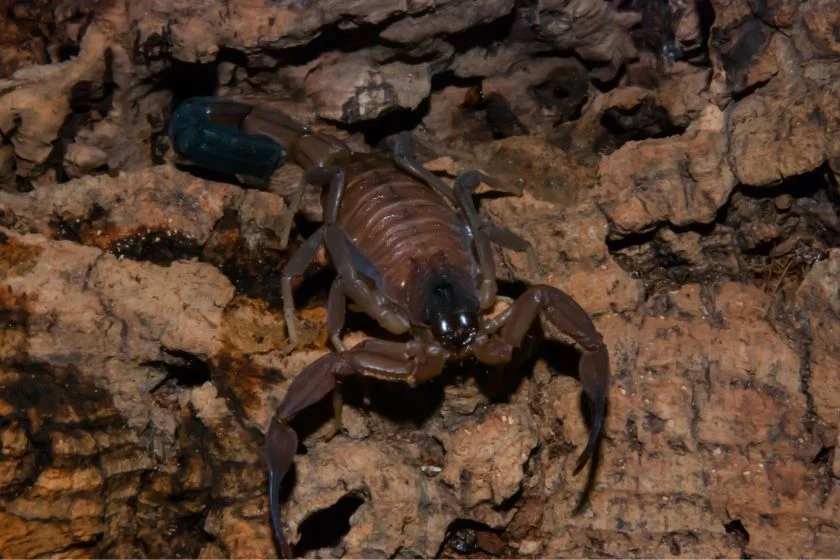
- Scientific Name: Scorpiones
- Habitat: Tropical RainForest, Grasslands, Deserts
- Threats: Venomous sting, can cause severe pain and allergic reactions in some individuals
The tropical region of the Dominican Republic is scattered with scorpions of over 45 species, with 42 endemics in the Caribbean nation.
As such, scorpions are abundant from its sandy beach lines to the shadowy plains of its jungles.
One notable feature of these arachnids is that they are adaptable and make just about any viable natural resource their home.
Hence the need for you to be extra careful when taking in the wonders of the jungle.
Now the sting of the scorpions in the Dominican Republic is not exactly poisonous, but you bet the pain is incredibly excruciating.
In some instances, organ failure (heart and respiratory organs) is typical for hours after the sting.
Make it a point to avoid scorpions, as they are one of the most dangerous animals in the Caribbean.
11. Hispaniolan giant tarantula

- Scientific Name: Phormictopus cancerides
- Habitat: Dry, well-drained soil in grassland areas
- Threats: Venomous spider, bite can cause pain, swelling, and muscle spasms
In the depths of the jungle of the Dominican Republic, the Hispaniolan giant tarantula is one of the most ferocious predators.
Its size, hairs, and anatomy make it rule over a dominion of insects and arthropods, which it casually feeds on regularly.
Due to their size, you would most likely be intrigued by the tarantula, but like everything else in the jungle, the shiny look is a perfect cover for the dangers these creatures pose.
Unlike most animals on our list, the Hispaniolan giant tarantula is not exactly harmful to humans since it prefers to run rather than attack.
However, in instances where it stings humans, its venoms would do you no harm, but that is a mere consolation for the pain and terrible irritation you are sure to feel.
10. Amazonian Giant Centipede
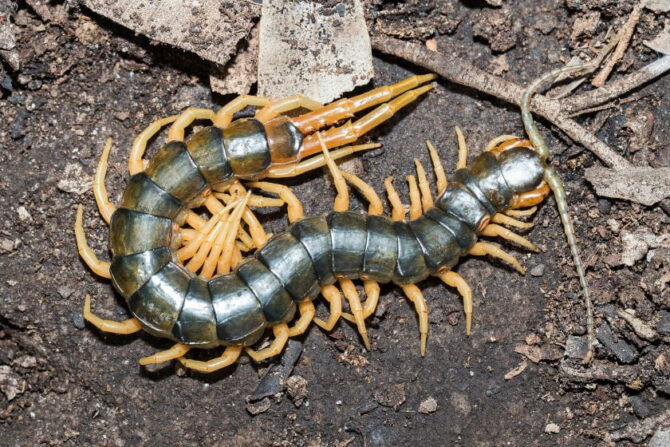
- Scientific Name: Scolopendra gigantea
- Habitat: Leaf liters, under areas bark, woodlands, rainforests, heath
- Threats: Venomous and aggressive, capable of delivering a painful and potentially deadly bite
Few insects are scary, but the Amazonian Giant Centipede is among the world’s most feared insects.
Brutal to prey and notorious for aggressively discharging their poison, these centipedes are to be feared.
While they limit their diet to small insects, snails, and roaches, there are instances where the Amazonian Giant centipede would battle snakes and bats to enjoy a tasty dinner.
To humans, they may not pose too much of a threat, but as the saying goes, it is better to be safe than sorry.
Stings from the centipede are not likely to cause any damage, as there is only one instance of human death due to being bitten by this carnivore.
However, stings from these centipedes require immediate medical attention and put humans in a lot of pain and discomfort.
9. Paper Wasp

- Scientific Name: Polistes major major
- Habitat: Leaf liters, under areas bark, woodlands, rainforests, heath
- Threats: Aggressive and territorial, can sting repeatedly, potentially dangerous to those with allergies
Known as the horse wasp in the Caribbeans, the paper wasp would not make our list as it does not directly pose a threat to humans.
However, as it is common in wildlife affairs, even the most docile of creatures in the wild can pull the most dangerous stunts when threatened.
The paper wasp would otherwise be non-aggressive if you observe from a safe distance, but once these creatures notice the slightest danger to their nest, they begin to attack.
Ordinarily, the stings of the paper wasp contain no venom, and aside from the pain, no long-lasting or life-threatening effect occurs.
But considering that the paper wasp threatens to sting multiple times, it is worth noting that they can be dangerous. Being stung in several spots by a swarm of paper wasps can be critical to anyone, especially those with allergies.
8. Cane Toad
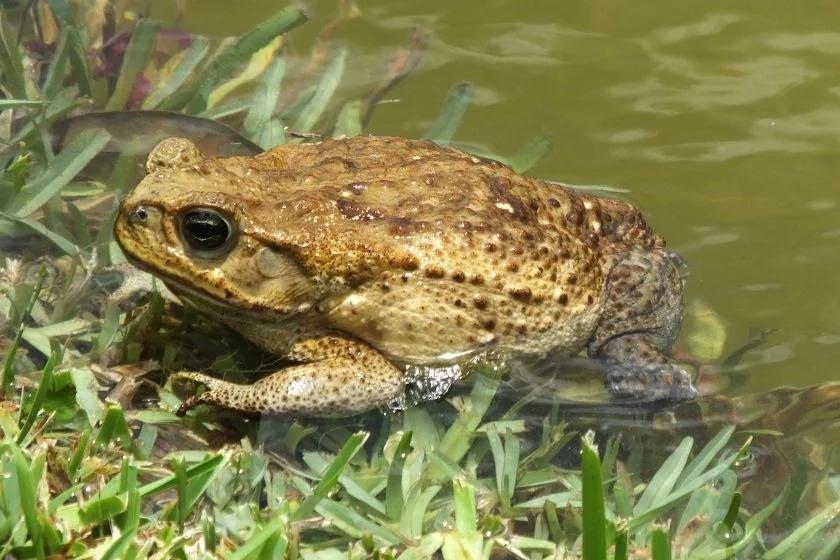
- Scientific Name: Rhinella marina
- Habitat: Coastal grasslands, rainforests, mangroves
- Threats: Toxic skin secretions that can cause hallucinations, seizures, and even death if ingested
The Cane Toad is a species of animal in the Dominican Republic which is subject to numerous myths and is infamous for its reputation as an invasive species.
As an alien species to the country, cane toads managed to dominate the territory after their introduction in the 20th century to help eliminate pests in plantations.
One peculiar feature of the survival tactic of these toads that makes them dangerous is how it rapidly eliminates native species while increasing their population.
Due to their abundance, cane toads are a tasty meal for prey despite being poisonous.
Seeing these creatures for the first time may interest you, as they are huge compared to the average toads. But beware, cane toads can shoot poison from behind their eyes.
This poison is non-lethal to humans except when ingested. Hence, while you may get carried away and touch the cane toad, ensure you wash your hands immediately, as that could mean the difference between life and death.
7. Cassiopea
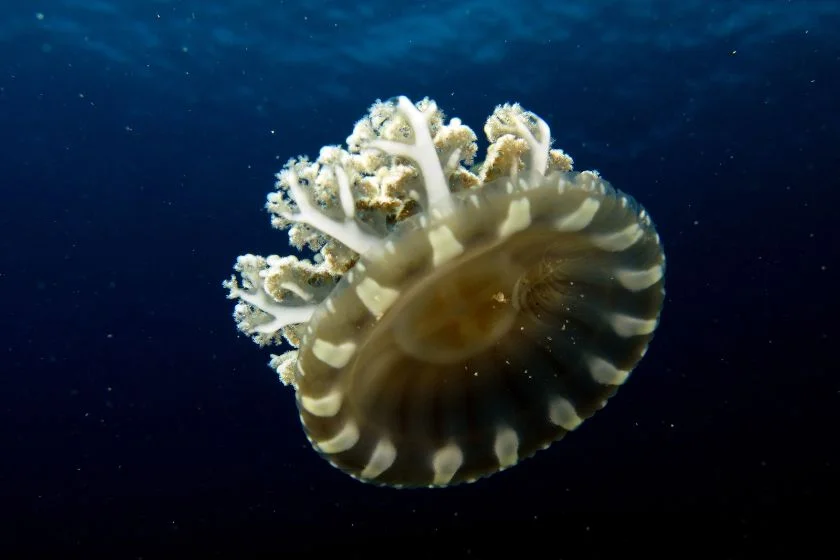
- Scientific Name: Cassiopea andromeda
- Habitat: warm part of the Caribbean sea
- Threats: Jellyfish species that can cause skin irritation and rashes in humans
The Cassiopeia, also known as the upside-down jellyfish, is one unique creature that poses dangers to swimmers.
The marine creature has multiple mouths and 49 secondary mouths in its arm. These mouths are ideal for catching prey and releasing clouds of stings into the ocean.
The sting from the Cassiopeia does not have any lasting damage, but the pain can trigger allergies.
Upon being released, these clouds of stings are capable of stinging whoever comes in contact with it, despite not being any close to this animal.
Hence, while you enjoy the soothing coolness of the Caribbean sea, ensure you are on the lookout for stray clouds of stingers.
Snorkelers and divers who explore the deep parts of the sea, especially those close to the mangroves, should watch out for these stingers since they lurk at such depths.
6. Raccoon
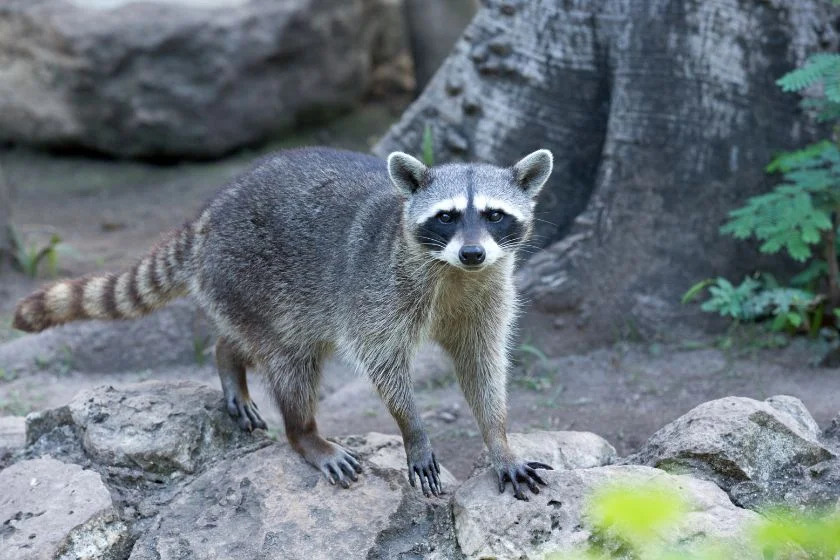
- Scientific Name: Procyon lotor
- Habitat: Moist woodland areas
- Threats: Can carry diseases that can be transmitted to humans, including rabies and leptospirosis
One of the impressive wonders the jungles of the Dominican Republic would present to you is the high intellect of the raccoon.
Mischievously clever, watching these mammals engage in the unfair matter of living in the wild can be amusing. However, as intriguing as the raccoon is, you must be wary.
These nocturnal creatures carry loads of diseases, which can be deadly to humans.
Despite how cute, calm, and innocuous they may look, ensure you do not make physical contact with the raccoon as they are dangerous to humans.
Raccoons are known to harbor viruses that cause health challenges, such as rabies and leptospirosis. Aside from transmitting viruses, the raccoon can infect humans with pathogenic nematodes and worms.
5. Wild Mongoose
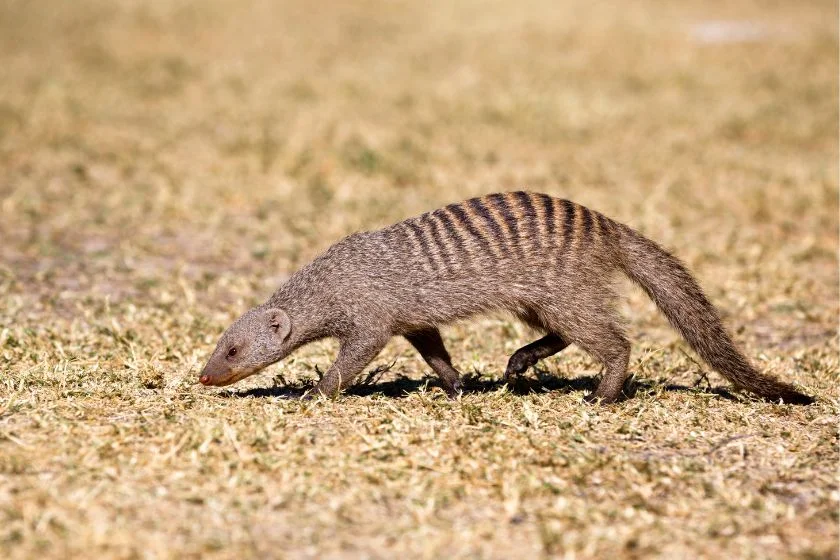
- Scientific Name: Urva auropunctata
- Habitat: Burrows in Tropical forests, deserts
- Threats: Can be aggressive when threatened, capable of inflicting bites that can transmit diseases such as rabies
Despite not being native to the Dominican Republic and other Caribbean nations, the wild mongoose calls the burrows of the jungle of these regions home.
The species was introduced into the Caribbeans to eliminate rats causing damage to plantations.
The mongoose did reduce the rat population but also went as far as lowering the population of endemic snakes. Sighting the mongoose on its wild hunting rampage would pique your interest.
Just as with the raccoon, the wild mongoose is host to many viruses, bacteria, and germs, which cause life-threatening diseases such as rabies in humans.
Aside from the risk of infections, mongooses can be aggressive when they feel threatened. While they look non-threatening, you should make no contact with them.
4. Portuguese Man o’ War
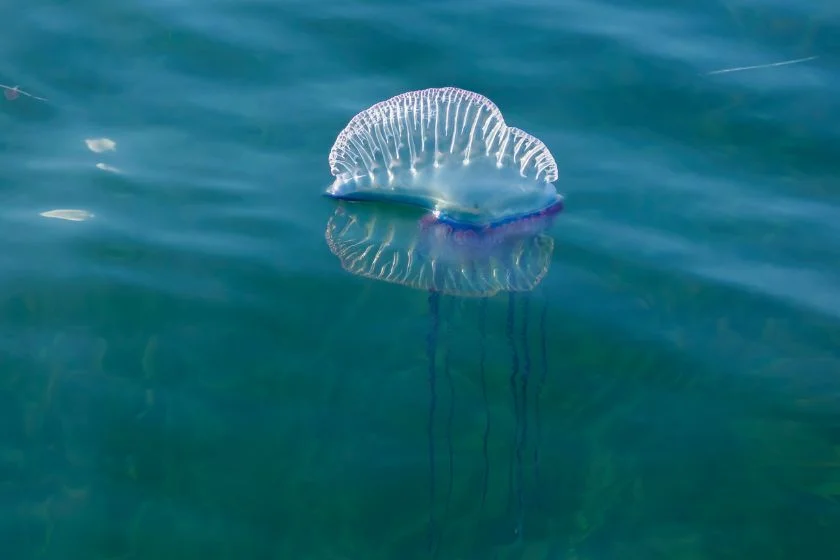
- Scientific Name: Physalia physalis
- Habitat: Warmer tropical and subtropical waters
- Threats: Painful and potentially life-threatening stings, which can cause intense burning, swelling, and difficulty breathing
One glance at the Portuguese man o’ war, and you could mistake it for a jellyfish.
Instead, this creature is made of small creatures clustered together to form a colony that operates as a single organism. Exclusive to warm waters, the Portuguese man o’ war is not to be underrated despite being small.
One distinctive feature that makes the Portuguese man o’ war clear to all is its long tentacles which are as long as 30 feet.
One sting from this creature can leave a terrible mark on the skin similar to that of wounds and can deliver excruciating pain.
A good rule of thumb is to flee as soon as you see the tentacles, which indicates you are too close to these deadly creatures.
3. Brown Widow and Black Widow Spider
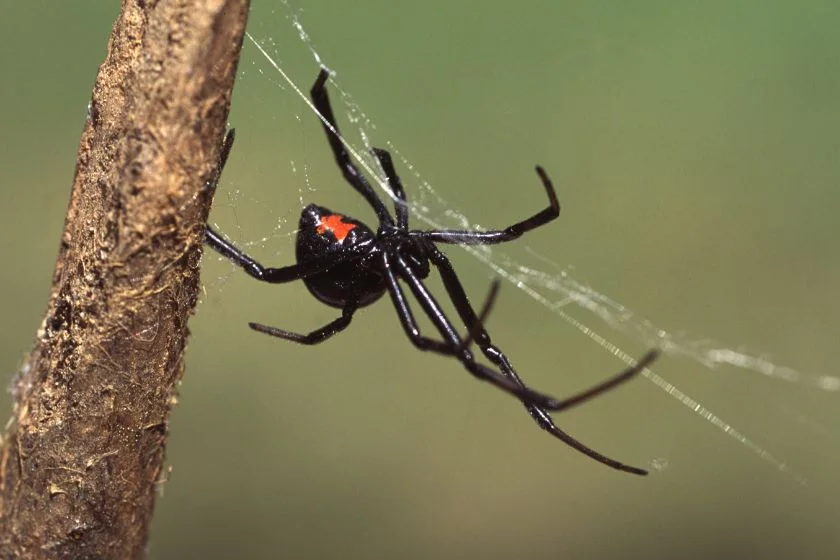
- Scientific Name: Brown Widow (Latrodectus geometricus), Black Widow (Latrodectus mactans)
- Habitat: Fallen branches, woodpiles, tree stumps, rock piles in tropical climates
- Threats: Venomous bite can cause muscle pain, cramps, and spasms
You probably wonder how deadly these spiders must be to have such grim monikers.
The brown widow spider and southern black widow spider are deadly creatures with similar poison-producing glands that can be very deadly to humans.
Of the two arachnids, the southern black widow is esteemed as more deadly as it possesses larger glands and thus produces more poison.
While they may seem scary by their description and monikers, these creatures are timid and rarely come in contact with humans.
There is no record of any death emanating from the spider bites. But caution has to be exercised when dealing with these deadly animals as they can be unpredictable despite being shy.
2. Brown Recluse Spider

- Scientific Name: Loxosceles reclusa
- Habitat: woodpiles, tree stumps,
- Threats: Venomous bite can cause tissue damage and necrosis
Rarely would you come across the brown recluse spider; as its name reveals, the brown recluse spider avoids human interaction and flees once it notices human presence.
However, despite how reclusive the spider is, it ranks as one of the most lethal spiders in the world, and its bite is one of the most critical cases of medically significant spider bites.
Though the bites of these arachnids are incredibly poisonous, they sometimes do not result in symptoms.
However, in some instances, bites can result in gangrenous tissues, and damage can be highly fatal depending on the extent of the venom.
1. Tiger Shark

- Scientific Name: Galeocerdo cuvier
- Habitat: Warm temperate and tropical waters
- Threats: Large predatory shark, known to attack humans in rare instances
The tiger shark is one of the most ferocious marine predators to be feared. No other sharks besides the great white shark have attacked humans as much as these macro predators.
As the pristine blue waters of the Dominican Republic call out to you, you should exercise caution to avoid encounters with this shark species.
With a length of about 16 feet and a weight of 1400 lbs, it is hard not to notice tiger sharks with their distinctive stripes.
They have a knack for eating artificial objects, and once they sight humans, they largely attack.
Hence, while you swim, you want to be on the lookout for sharks, as their bites can be incredibly fatal.
Dominican Republic Wildlife Safety Tips
The threats posed by wildlife in the Dominican Republic are endless. Hence it is best to follow these safety tips in dealing with wildlife in the Caribbean country.
Avoid Close Encounter
Due to how unpredictable animals can be, you should avoid close encounters and movements that may startle these creatures.
Close or sudden movements to their homes can be interpreted as threats by wildlife and lead to aggressive behavior.
While you may want to take pictures, don’t forget to keep a safe distance for your safety and wildlife protection.
Stay in Groups
Animals tend to be intimidated by humans, and as such, a group of humans would scare away any mischievous wildlife.
Hence, when sightseeing and enjoying the sight of wildlife, whether in the jungle or the ocean, ensure you remain with a group of other animal lovers.
Avoid Direct Contact
This is one rule you must continually remind yourself of, as the beauty of the jungle can sway you into contact with wildlife.
It is dangerous as you risk contracting life-threatening infections or may lead to an aggressive response from wildlife.
Also, ensure that your hands are free of food, snacks, or any attractive object.
Also See:
10 Most Dangerous Animals In Fiji That Are Deadly
Conclusion
As with all Caribbean countries, you are sure to enjoy extraordinary sights in the oceans and jungle of the Dominican Republic.
It is reassuring to watch animals in their natural settings go about their usual wildlife business.
But while you’re swayed by the free-mindedness of nature and these creatures, you should know about these most dangerous animals in Dominican Republic and how to best avoid them.
Enjoy the sights, but not at the expense of your safety and health.

